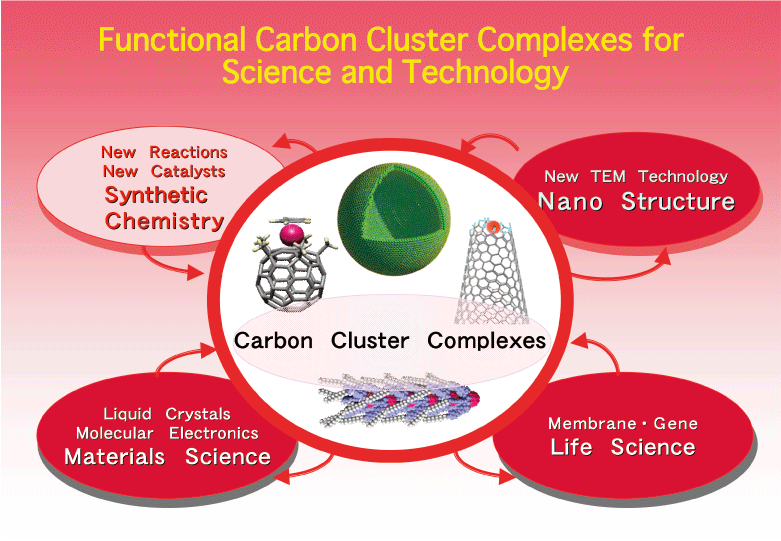
| HOME | ||
| Japanese | ||
| News | ||
| Research | ||
| Members | ||
| Office | ||
| Publications | ||
| Links | ||
|
The Nakamura Functional Carbon Cluster project is aimed at creating a wide variety of functional materials based on C60 and carbon nanotubes that are given functionality through organic synthesis. Possibilities include molecular electronic devices, a solar battery, thin film transistors, and luminescence materials. Next generation electronics based on organic materials. The research strategy is emphasizing several research themes: The central theme is synthesis strategies. In order to make more complex materials it is absolutely necessary to develop even more sophisticated synthetic methodologies. To use C60 in biological applications, it must be dissolved in water. This has been achieved, which subsequently revealed very primitive biological activity. Observations have shown that it is possible to bind C60 onto linear DNA, causing it to be expressed in mammalian cells. This methodology might be a possible way to deliver DNA into mammalian cells, and thus useful for gene therapy, so as to produce a useful product. Functionalized C60 has an innate ability to form an entity so that if an anion is made out of it, which is dissolved in neutral water, it forms a bilayer inside water. Its inside is water and its outside is water, just like a living cell. A basic understanding of how this happens is still not available. This amazing new membrane is being analyzed theoretically and experimentally with an aim for applications. A d-π system has been made with a carbon nanotube. Gadolinium (Gd) metal was placed onto the tip of a carbon nanotube. Using a special electron microscope, the Gd could be seen sitting on a tube-like structure. An effort is being made to make a microscopic system by which both the metal and carbon atoms can be seen clearly, thus allowing the chemistry to be understood better, thus allowing new functional materials to be developed. The most socially oriented aspect of this project is to find wide-ranging applications of the newly created functional molecules. An application of functional fullerenes to printable electronic devices will be an example of such an endeavor.
|

|
|
HOME > Research |